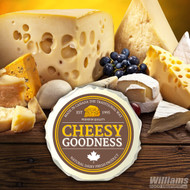Cheesy Goodness
2018 Aug 10th
Cheese…Aww wonderful cheese! What can I say about cheese…Cheese in my opinion is the backbone to many things, from savory cheesy dishes, to yummy sandwiches, to grilling to desserts and of course my favorite…wine! Cheese was created by ancient societies and has been around for thousands of years, and can be traced back to 8000 BC. The origins of cheese production are unknown, however, it has been traced back to Europe, Central Asia and the Middle East.
Cheese is a dairy product that is derived from the milk of cows, goats, sheep and even buffalo. Cheese has an array of textures, aromas, flavors and forms! There is around 1,831 different varieties of cheeses, from 74 different countries in the world. Britain takes the lead over France with varieties of over 750 different cheeses, while France produces around 400 different cheese. But it's Canada that's Head Cheese with over 1,050 types of cheeses produced. Cheddar cheese is a major export in Canada.
 With so any different cheeses, how can you choose? I know I can’t. I will, however, begin with the different “families” of cheeses. There seems to be 12 different families of cheese, however, I will discuss the basic 8 families of cheeses. I am not a cheese monger (a specialist of cheese), just a fan!
Fresh Cheese
With so any different cheeses, how can you choose? I know I can’t. I will, however, begin with the different “families” of cheeses. There seems to be 12 different families of cheese, however, I will discuss the basic 8 families of cheeses. I am not a cheese monger (a specialist of cheese), just a fan!
Fresh Cheese
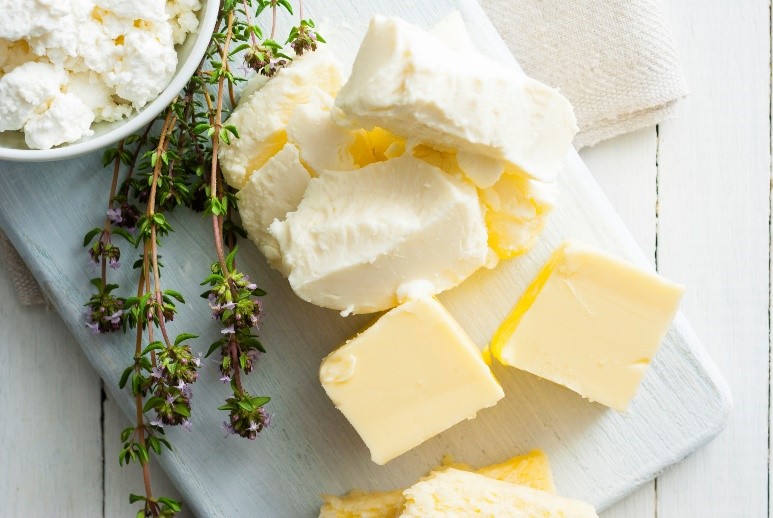 Fresh cheeses do not have a ripening period. These cheeses have a high moisture content, are mild in taste and have a creamy texture. Fresh cheeses should be eaten within a few days. Theses cheeses include, Mascarpone, Ricotta, Cotija, some Mozzarellas, Queso Fresco, and Feta. Think of a yummy and sweet Cannoli! And since I use most of these cheeses in Italian cooking, I prefer a nice Chianti.
Soft-ripened Cheese:
Fresh cheeses do not have a ripening period. These cheeses have a high moisture content, are mild in taste and have a creamy texture. Fresh cheeses should be eaten within a few days. Theses cheeses include, Mascarpone, Ricotta, Cotija, some Mozzarellas, Queso Fresco, and Feta. Think of a yummy and sweet Cannoli! And since I use most of these cheeses in Italian cooking, I prefer a nice Chianti.
Soft-ripened Cheese:
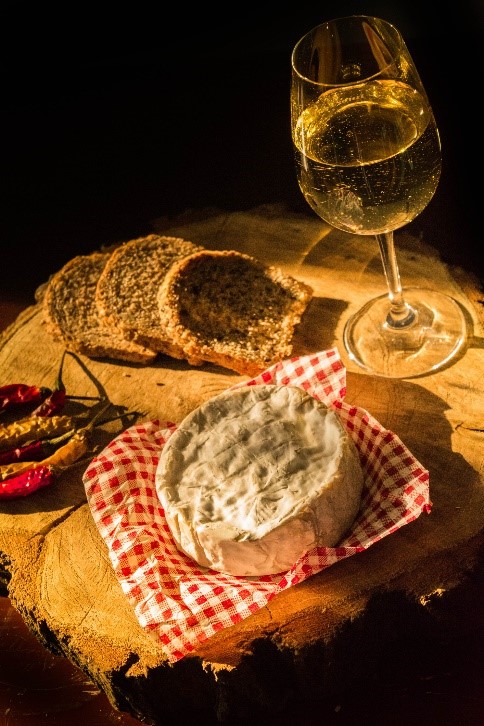 Soft-ripened cheeses are soft and creamy even when chilled and they are ripened from the outside in. The outside rind is often a white, bloomy rind and have short aging period. The most common cheeses in this category are Brie, Camembert and Triple Creams. These cheeses go nicely with a dry champagne or chardonnay. The combination of different flavors that come out when paring these cheeses with one of these wines is delicious. Of course, I love almost any combination of wine, champagne and cheese! Add some grapes, nuts, figs and dried fruit for a nice ooey, gooey savory treat!
Semi-Soft Cheese:
Soft-ripened cheeses are soft and creamy even when chilled and they are ripened from the outside in. The outside rind is often a white, bloomy rind and have short aging period. The most common cheeses in this category are Brie, Camembert and Triple Creams. These cheeses go nicely with a dry champagne or chardonnay. The combination of different flavors that come out when paring these cheeses with one of these wines is delicious. Of course, I love almost any combination of wine, champagne and cheese! Add some grapes, nuts, figs and dried fruit for a nice ooey, gooey savory treat!
Semi-Soft Cheese:
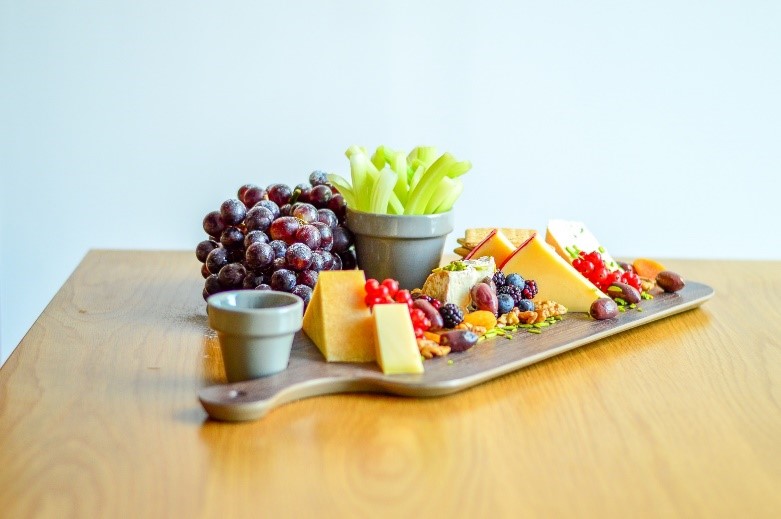 Semi-soft cheeses have a creamy inside and are smooth with hardly any rind or no rind at all, which I find very pleasing, as I’m not a fan of the rind. My friends always get annoyed with me, as I will just dig out the cheese and not eat the rind. This is funny to me as the center of the cheese falls in. These cheeses also have a high moisture content and are often pungent. Though they sometimes pungent they are usually rather mild in flavor. Some semi-soft cheeses include; Fontina, Havarti, Monterey Jack, Bleu D’Auvergne, Petit Swiss, Jarlsberg and some Goudas.
Washed-Rind Cheeses:
Semi-soft cheeses have a creamy inside and are smooth with hardly any rind or no rind at all, which I find very pleasing, as I’m not a fan of the rind. My friends always get annoyed with me, as I will just dig out the cheese and not eat the rind. This is funny to me as the center of the cheese falls in. These cheeses also have a high moisture content and are often pungent. Though they sometimes pungent they are usually rather mild in flavor. Some semi-soft cheeses include; Fontina, Havarti, Monterey Jack, Bleu D’Auvergne, Petit Swiss, Jarlsberg and some Goudas.
Washed-Rind Cheeses:
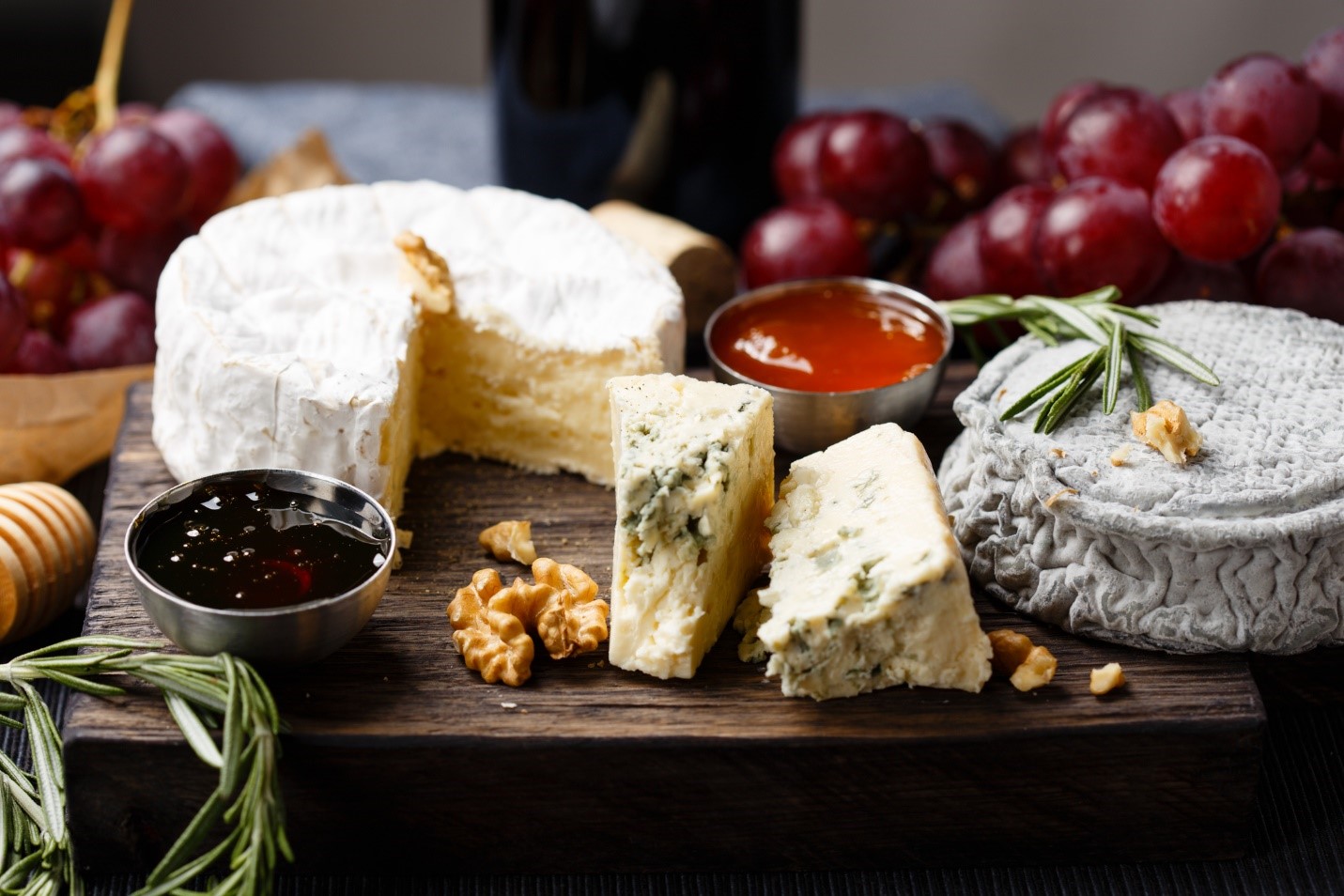 Washed-rind cheeses are surface-ripened by washing the cheeses with such ingredients as brine, wine, brandy and beer. These cheeses are a harder and have an aroma like feet or dirty socks and that is why they are called “stinky cheese”. Though these cheeses have a pungent odor, they have nice mellow and pleasant taste.
One of my favorite “stinky cheese” is Gruyere! For the holidays, I like to make a Chicken Crepes Mornay which adds loads of flavor to the sauce. Your friends and family will not stop talking about this one and don’t forget to double the recipe!
Some of these cheeses include; Gruyere, Epoisses and Taleggio. Thank goodness, they don’t taste like a dirty sock!
Blue Cheese:
Washed-rind cheeses are surface-ripened by washing the cheeses with such ingredients as brine, wine, brandy and beer. These cheeses are a harder and have an aroma like feet or dirty socks and that is why they are called “stinky cheese”. Though these cheeses have a pungent odor, they have nice mellow and pleasant taste.
One of my favorite “stinky cheese” is Gruyere! For the holidays, I like to make a Chicken Crepes Mornay which adds loads of flavor to the sauce. Your friends and family will not stop talking about this one and don’t forget to double the recipe!
Some of these cheeses include; Gruyere, Epoisses and Taleggio. Thank goodness, they don’t taste like a dirty sock!
Blue Cheese:
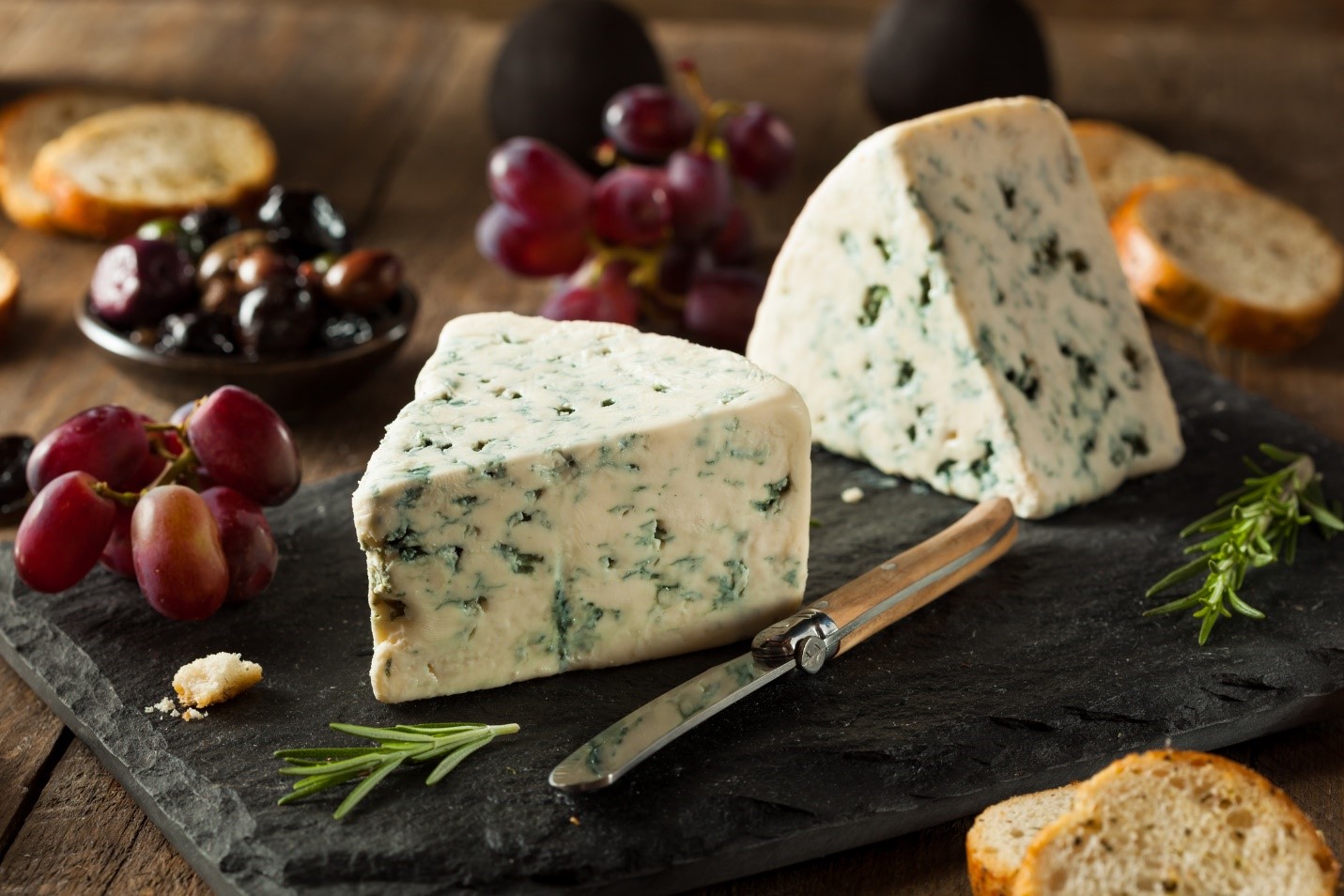 Blue Cheese, you either love it or hate it! I love blue cheese. Blue cheese has distinguishing blue or green vein(s) which run through the cheese. This is created by introducing penicillium roqueforti mold into the milk during the process. Blue Cheese has a short aging period and the wheels are then pierced, to allow for air to enter and activate the bacteria to grow the blue veining. This blue veining is what makes Blue Cheese recognizable and has flavors that range from mild to pungent. In Italy these cheeses are called “Gorgonzola”, in France “Bleu” or Roquefort – a protected name and style and in Britain and the US “Blue”.
Some blue cheeses include; Rogue River Blue, Bleu D’Auvergne, Black River Gorgonzola.
There is nothing that tastes better than blue cheese crumbles on a nice, fat, juicy burger, or Roquefort on a crisp cold salad and my all-time favorite…blue cheese sauce on a big’ol steak! I love blue cheese and could use it on almost anything. I love dipping my French fries in blue cheese too!
Hard or Firm
Blue Cheese, you either love it or hate it! I love blue cheese. Blue cheese has distinguishing blue or green vein(s) which run through the cheese. This is created by introducing penicillium roqueforti mold into the milk during the process. Blue Cheese has a short aging period and the wheels are then pierced, to allow for air to enter and activate the bacteria to grow the blue veining. This blue veining is what makes Blue Cheese recognizable and has flavors that range from mild to pungent. In Italy these cheeses are called “Gorgonzola”, in France “Bleu” or Roquefort – a protected name and style and in Britain and the US “Blue”.
Some blue cheeses include; Rogue River Blue, Bleu D’Auvergne, Black River Gorgonzola.
There is nothing that tastes better than blue cheese crumbles on a nice, fat, juicy burger, or Roquefort on a crisp cold salad and my all-time favorite…blue cheese sauce on a big’ol steak! I love blue cheese and could use it on almost anything. I love dipping my French fries in blue cheese too!
Hard or Firm
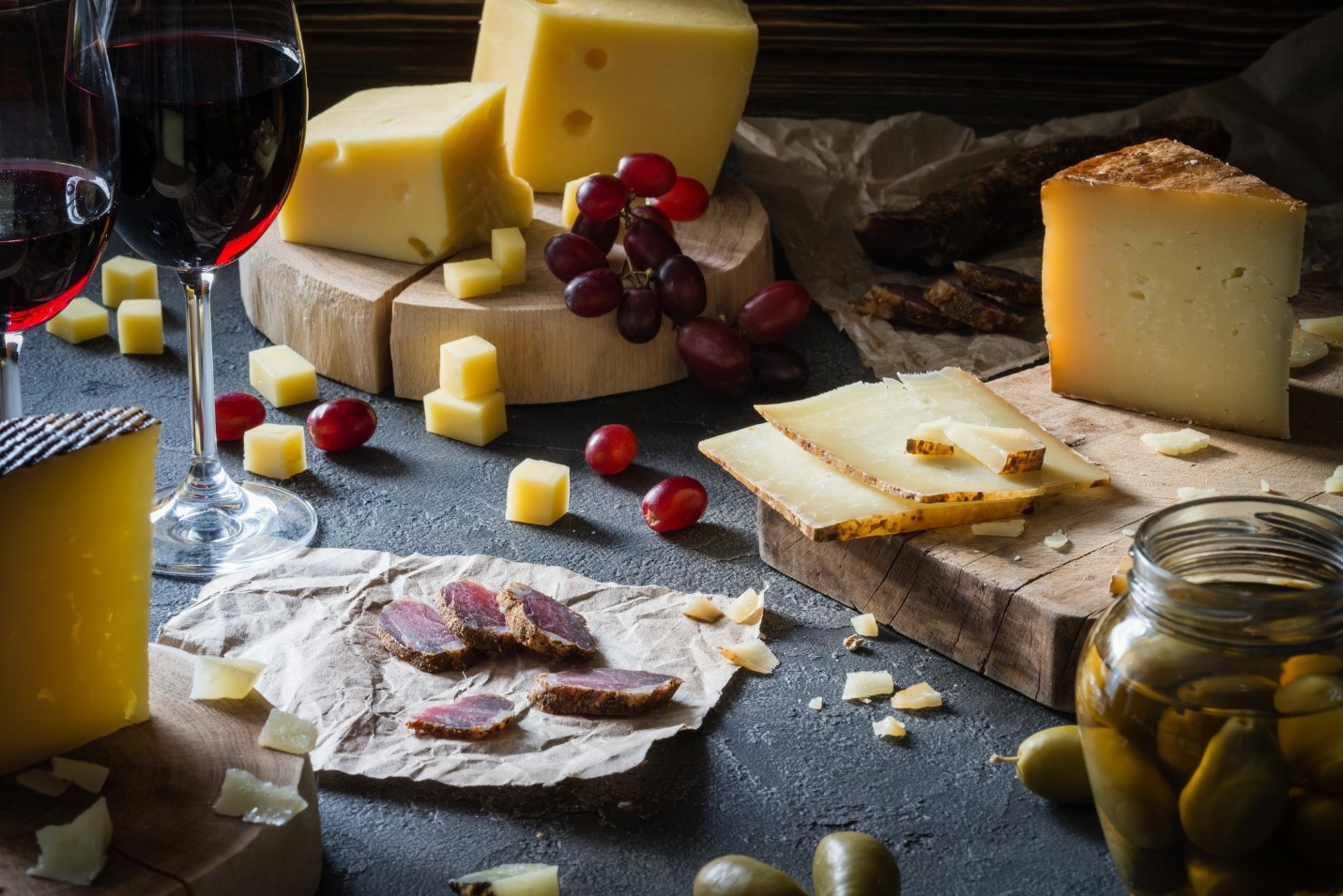 Hard or Firm cheeses cover many categories and some of the cheeses fall into another family, such as, Gruyere, Comté, Emmentaler Swiss, Manchego and Cheddars to name a few. A hard cheese is just that, hard and you are able to grate it, such as, Parmesan. I always like to include a cheddar or Swiss on a charcuterie and cheese plate along with specialty meats, fruit and nuts. Throw in some wine and fresh French bread and you have a lovely and tasty light lunch!
Some friends had an appetizer party, which by the way is a fantastic way to go. Food isn’t too heavy and appetizers are easy to make! My new favorite go to appetizer is the Gougères, pronounced goo-zhair. They are light and airy tasty cheese filled pastry bites using Gruyere, Comté or Emmentaler cheese. Very easy to make and scrumptious! Recipe below, and I strongly encourage you to enjoy!
Spun Cheese
Hard or Firm cheeses cover many categories and some of the cheeses fall into another family, such as, Gruyere, Comté, Emmentaler Swiss, Manchego and Cheddars to name a few. A hard cheese is just that, hard and you are able to grate it, such as, Parmesan. I always like to include a cheddar or Swiss on a charcuterie and cheese plate along with specialty meats, fruit and nuts. Throw in some wine and fresh French bread and you have a lovely and tasty light lunch!
Some friends had an appetizer party, which by the way is a fantastic way to go. Food isn’t too heavy and appetizers are easy to make! My new favorite go to appetizer is the Gougères, pronounced goo-zhair. They are light and airy tasty cheese filled pastry bites using Gruyere, Comté or Emmentaler cheese. Very easy to make and scrumptious! Recipe below, and I strongly encourage you to enjoy!
Spun Cheese
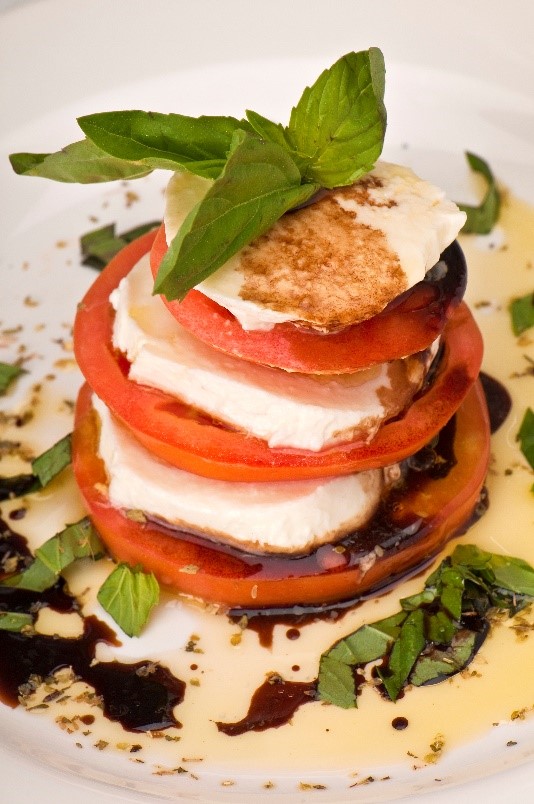 Spun cheeses are usually from an Italian origin and called “Pasta Filata”. These cheeses are cooked and then kneaded or spun. Depending on the producer of the cheese, they can be hard grating cheeses, while the softer cheeses are brined.
Some cheeses in this category include; Burrata, Mozzarella, Scamorza, Provolone and Caciocovallo.
Burrata is a rich and indulgent cheese, perfect for a special occasion. It is a versatile cheese as well and is delicious on a pizza or a stacked tomato salad with a drizzle of olive oil and balsamic vinegar, just to name a couple of yummy dishes. Yum!
Gougères Recipe
Spun cheeses are usually from an Italian origin and called “Pasta Filata”. These cheeses are cooked and then kneaded or spun. Depending on the producer of the cheese, they can be hard grating cheeses, while the softer cheeses are brined.
Some cheeses in this category include; Burrata, Mozzarella, Scamorza, Provolone and Caciocovallo.
Burrata is a rich and indulgent cheese, perfect for a special occasion. It is a versatile cheese as well and is delicious on a pizza or a stacked tomato salad with a drizzle of olive oil and balsamic vinegar, just to name a couple of yummy dishes. Yum!
Gougères Recipe
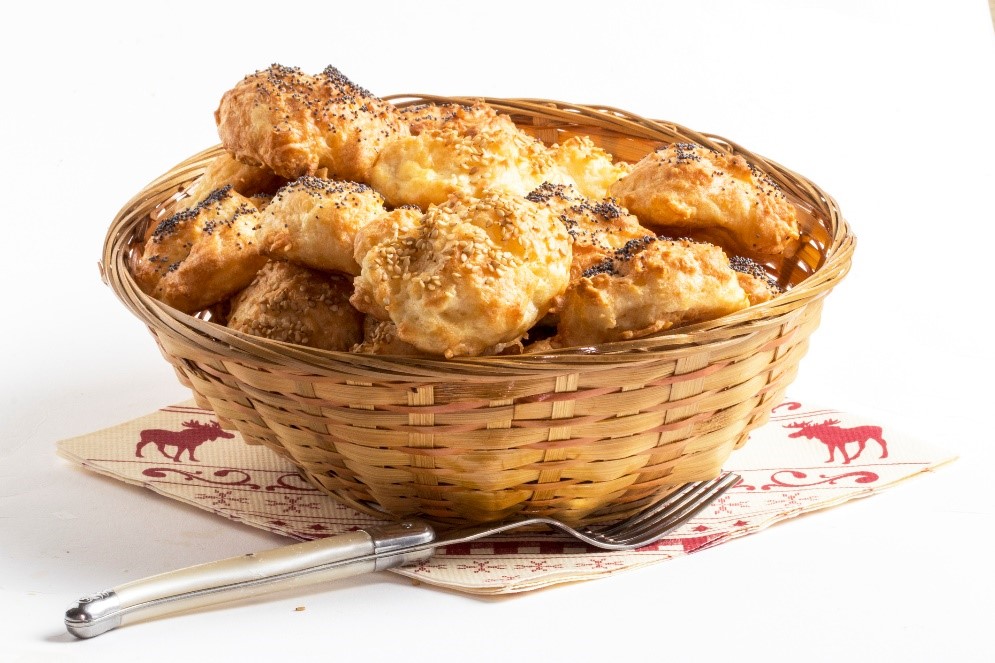 Serves: about 2 dozen
Ingredients
Serves: about 2 dozen
Ingredients
 With so any different cheeses, how can you choose? I know I can’t. I will, however, begin with the different “families” of cheeses. There seems to be 12 different families of cheese, however, I will discuss the basic 8 families of cheeses. I am not a cheese monger (a specialist of cheese), just a fan!
Fresh Cheese
With so any different cheeses, how can you choose? I know I can’t. I will, however, begin with the different “families” of cheeses. There seems to be 12 different families of cheese, however, I will discuss the basic 8 families of cheeses. I am not a cheese monger (a specialist of cheese), just a fan!
Fresh Cheese
 Fresh cheeses do not have a ripening period. These cheeses have a high moisture content, are mild in taste and have a creamy texture. Fresh cheeses should be eaten within a few days. Theses cheeses include, Mascarpone, Ricotta, Cotija, some Mozzarellas, Queso Fresco, and Feta. Think of a yummy and sweet Cannoli! And since I use most of these cheeses in Italian cooking, I prefer a nice Chianti.
Soft-ripened Cheese:
Fresh cheeses do not have a ripening period. These cheeses have a high moisture content, are mild in taste and have a creamy texture. Fresh cheeses should be eaten within a few days. Theses cheeses include, Mascarpone, Ricotta, Cotija, some Mozzarellas, Queso Fresco, and Feta. Think of a yummy and sweet Cannoli! And since I use most of these cheeses in Italian cooking, I prefer a nice Chianti.
Soft-ripened Cheese:
 Soft-ripened cheeses are soft and creamy even when chilled and they are ripened from the outside in. The outside rind is often a white, bloomy rind and have short aging period. The most common cheeses in this category are Brie, Camembert and Triple Creams. These cheeses go nicely with a dry champagne or chardonnay. The combination of different flavors that come out when paring these cheeses with one of these wines is delicious. Of course, I love almost any combination of wine, champagne and cheese! Add some grapes, nuts, figs and dried fruit for a nice ooey, gooey savory treat!
Semi-Soft Cheese:
Soft-ripened cheeses are soft and creamy even when chilled and they are ripened from the outside in. The outside rind is often a white, bloomy rind and have short aging period. The most common cheeses in this category are Brie, Camembert and Triple Creams. These cheeses go nicely with a dry champagne or chardonnay. The combination of different flavors that come out when paring these cheeses with one of these wines is delicious. Of course, I love almost any combination of wine, champagne and cheese! Add some grapes, nuts, figs and dried fruit for a nice ooey, gooey savory treat!
Semi-Soft Cheese:
 Semi-soft cheeses have a creamy inside and are smooth with hardly any rind or no rind at all, which I find very pleasing, as I’m not a fan of the rind. My friends always get annoyed with me, as I will just dig out the cheese and not eat the rind. This is funny to me as the center of the cheese falls in. These cheeses also have a high moisture content and are often pungent. Though they sometimes pungent they are usually rather mild in flavor. Some semi-soft cheeses include; Fontina, Havarti, Monterey Jack, Bleu D’Auvergne, Petit Swiss, Jarlsberg and some Goudas.
Washed-Rind Cheeses:
Semi-soft cheeses have a creamy inside and are smooth with hardly any rind or no rind at all, which I find very pleasing, as I’m not a fan of the rind. My friends always get annoyed with me, as I will just dig out the cheese and not eat the rind. This is funny to me as the center of the cheese falls in. These cheeses also have a high moisture content and are often pungent. Though they sometimes pungent they are usually rather mild in flavor. Some semi-soft cheeses include; Fontina, Havarti, Monterey Jack, Bleu D’Auvergne, Petit Swiss, Jarlsberg and some Goudas.
Washed-Rind Cheeses:
 Washed-rind cheeses are surface-ripened by washing the cheeses with such ingredients as brine, wine, brandy and beer. These cheeses are a harder and have an aroma like feet or dirty socks and that is why they are called “stinky cheese”. Though these cheeses have a pungent odor, they have nice mellow and pleasant taste.
One of my favorite “stinky cheese” is Gruyere! For the holidays, I like to make a Chicken Crepes Mornay which adds loads of flavor to the sauce. Your friends and family will not stop talking about this one and don’t forget to double the recipe!
Some of these cheeses include; Gruyere, Epoisses and Taleggio. Thank goodness, they don’t taste like a dirty sock!
Blue Cheese:
Washed-rind cheeses are surface-ripened by washing the cheeses with such ingredients as brine, wine, brandy and beer. These cheeses are a harder and have an aroma like feet or dirty socks and that is why they are called “stinky cheese”. Though these cheeses have a pungent odor, they have nice mellow and pleasant taste.
One of my favorite “stinky cheese” is Gruyere! For the holidays, I like to make a Chicken Crepes Mornay which adds loads of flavor to the sauce. Your friends and family will not stop talking about this one and don’t forget to double the recipe!
Some of these cheeses include; Gruyere, Epoisses and Taleggio. Thank goodness, they don’t taste like a dirty sock!
Blue Cheese:
 Blue Cheese, you either love it or hate it! I love blue cheese. Blue cheese has distinguishing blue or green vein(s) which run through the cheese. This is created by introducing penicillium roqueforti mold into the milk during the process. Blue Cheese has a short aging period and the wheels are then pierced, to allow for air to enter and activate the bacteria to grow the blue veining. This blue veining is what makes Blue Cheese recognizable and has flavors that range from mild to pungent. In Italy these cheeses are called “Gorgonzola”, in France “Bleu” or Roquefort – a protected name and style and in Britain and the US “Blue”.
Some blue cheeses include; Rogue River Blue, Bleu D’Auvergne, Black River Gorgonzola.
There is nothing that tastes better than blue cheese crumbles on a nice, fat, juicy burger, or Roquefort on a crisp cold salad and my all-time favorite…blue cheese sauce on a big’ol steak! I love blue cheese and could use it on almost anything. I love dipping my French fries in blue cheese too!
Hard or Firm
Blue Cheese, you either love it or hate it! I love blue cheese. Blue cheese has distinguishing blue or green vein(s) which run through the cheese. This is created by introducing penicillium roqueforti mold into the milk during the process. Blue Cheese has a short aging period and the wheels are then pierced, to allow for air to enter and activate the bacteria to grow the blue veining. This blue veining is what makes Blue Cheese recognizable and has flavors that range from mild to pungent. In Italy these cheeses are called “Gorgonzola”, in France “Bleu” or Roquefort – a protected name and style and in Britain and the US “Blue”.
Some blue cheeses include; Rogue River Blue, Bleu D’Auvergne, Black River Gorgonzola.
There is nothing that tastes better than blue cheese crumbles on a nice, fat, juicy burger, or Roquefort on a crisp cold salad and my all-time favorite…blue cheese sauce on a big’ol steak! I love blue cheese and could use it on almost anything. I love dipping my French fries in blue cheese too!
Hard or Firm
 Hard or Firm cheeses cover many categories and some of the cheeses fall into another family, such as, Gruyere, Comté, Emmentaler Swiss, Manchego and Cheddars to name a few. A hard cheese is just that, hard and you are able to grate it, such as, Parmesan. I always like to include a cheddar or Swiss on a charcuterie and cheese plate along with specialty meats, fruit and nuts. Throw in some wine and fresh French bread and you have a lovely and tasty light lunch!
Some friends had an appetizer party, which by the way is a fantastic way to go. Food isn’t too heavy and appetizers are easy to make! My new favorite go to appetizer is the Gougères, pronounced goo-zhair. They are light and airy tasty cheese filled pastry bites using Gruyere, Comté or Emmentaler cheese. Very easy to make and scrumptious! Recipe below, and I strongly encourage you to enjoy!
Spun Cheese
Hard or Firm cheeses cover many categories and some of the cheeses fall into another family, such as, Gruyere, Comté, Emmentaler Swiss, Manchego and Cheddars to name a few. A hard cheese is just that, hard and you are able to grate it, such as, Parmesan. I always like to include a cheddar or Swiss on a charcuterie and cheese plate along with specialty meats, fruit and nuts. Throw in some wine and fresh French bread and you have a lovely and tasty light lunch!
Some friends had an appetizer party, which by the way is a fantastic way to go. Food isn’t too heavy and appetizers are easy to make! My new favorite go to appetizer is the Gougères, pronounced goo-zhair. They are light and airy tasty cheese filled pastry bites using Gruyere, Comté or Emmentaler cheese. Very easy to make and scrumptious! Recipe below, and I strongly encourage you to enjoy!
Spun Cheese
 Spun cheeses are usually from an Italian origin and called “Pasta Filata”. These cheeses are cooked and then kneaded or spun. Depending on the producer of the cheese, they can be hard grating cheeses, while the softer cheeses are brined.
Some cheeses in this category include; Burrata, Mozzarella, Scamorza, Provolone and Caciocovallo.
Burrata is a rich and indulgent cheese, perfect for a special occasion. It is a versatile cheese as well and is delicious on a pizza or a stacked tomato salad with a drizzle of olive oil and balsamic vinegar, just to name a couple of yummy dishes. Yum!
Gougères Recipe
Spun cheeses are usually from an Italian origin and called “Pasta Filata”. These cheeses are cooked and then kneaded or spun. Depending on the producer of the cheese, they can be hard grating cheeses, while the softer cheeses are brined.
Some cheeses in this category include; Burrata, Mozzarella, Scamorza, Provolone and Caciocovallo.
Burrata is a rich and indulgent cheese, perfect for a special occasion. It is a versatile cheese as well and is delicious on a pizza or a stacked tomato salad with a drizzle of olive oil and balsamic vinegar, just to name a couple of yummy dishes. Yum!
Gougères Recipe
 Serves: about 2 dozen
Ingredients
Serves: about 2 dozen
Ingredients
- 1 cup water
- 8 Tbsp. butter
- 1 cup all-purpose flour, sifted
- pinch of salt
- pinch of nutmeg (optional)
- freshly ground black pepper to taste
- 4 large eggs
- 1½ cups grated Gruyère cheese, plus more
- Egg wash: 1 egg + 1 teaspoon water
- Preheat oven to 450F degrees.
- Combine water, butter, salt, pepper and nutmeg (if using) in a medium-sized saucepan and bring to a boil, over medium high heat.
- Once the water is boiling and the butter has melted, remove the saucepan from the stove and add all the flour at once. Stir vigorously until combined and resembling mashed potatoes. Bring the pan back to the stove, over medium-low heat, and cook until the dough dries out a bit and starts to create a film on the bottom of the pan, about 3-5 minutes.
- Transfer the dough to your stand mixer fitted with the paddle attachment. Beat the dough on medium low speed so it cools off a bit. Once it's just warm to the touch, start adding the eggs, one at a time. Wait for each egg to be completely incorporated before adding the next one. The final dough should be smooth and creamy.
- Add the cheese and mix until incorporated
- Shape the Gougères: Using a medium sized scoop, drop the dough from a spoon onto parchment-paper lined baking sheets, leaving about 2 inches of space between them. For more uniform looking Gougères, I like to wet my hands and shape the dough into little balls before placing them on the baking sheets. You can also go the Julia Child way and scrape the dough into a pastry bag fitted with a wide plain tip and pipe the dough into mounds, about the size of a small cherry tomato.
- Brush the top of each Gouger with egg wash and sprinkle with extra grated cheese or some chopped fresh herbs.
- Bake the Gougères for 5 minutes and then lower the heat to 350F degrees. Bake for another 20 minutes, rotating once during the baking time, or until puffed and deep golden brown.
- Remove from oven and allow to cool for 5 minutes. Remove from baking trays to cooling racks. https://www.williamsfoodequipment.com/bakeware/baking-pastry-tools/piping-bags
- Serve warm or at room temperature.

